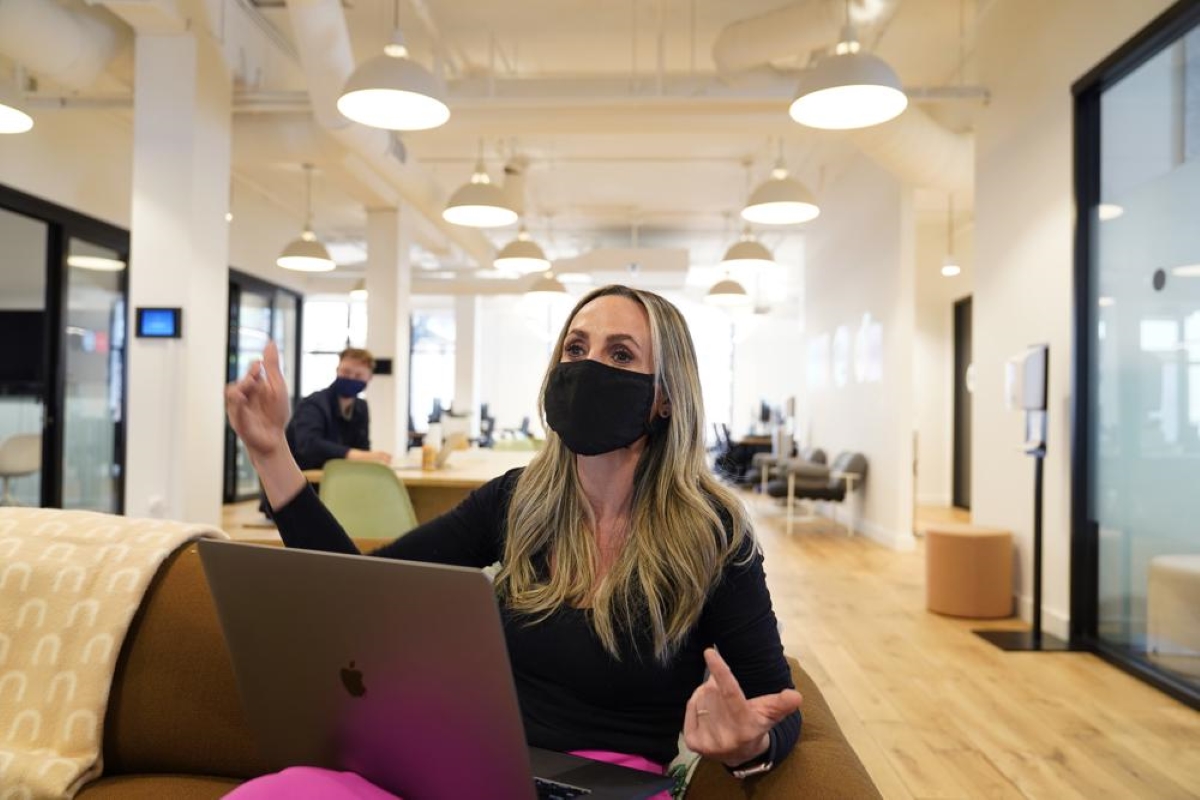Transfers of 50 police officers by Deshmukh under CBI lens: Sources
As per sources, all transfers that were made after the Police Establishment Board (PEB) meeting which took place in September 2020, are under the lens
This hybrid approach permitting employees to toggle between remote and in-office work has been widely embraced in the technology industry, particularly among the largest companies with the biggest payrolls.

Kelly Soderlund works at the TripActions office in San Francisco, Friday.
Technology companies which were at the vanguard of a new work environment while sitting at home are now facing a dilemma of whether they should bring their long-isolated employees back to offices which runs on the tenet of teamwork.
“I thought this period of remote work would be the most challenging year-and-half of my career, but it’s not,” said Brent Hyder, the chief people officer for business software maker Salesforce. “Getting everything started back up the way it needs to be is proving to be even more difficult.”
Advertisement
That transition has been complicated by the rapid spread of the delta variant, dismantling plans of many tech companies for bringing back most of their workers near or after Labor Day weekend.
Advertisement
Employers’ next steps could redefine how and where people work, predicts Laura Boudreau, a Columbia University assistant economics professor who studies workplace issues.
“We have moved beyond the theme of remote work being a temporary thing,” Boudreau says.
Because they typically revolve around digital and online products, most tech jobs are tailor made for remote work. Yet most major tech companies insist that their employees should be ready to work in the office two or three days each week after the pandemic is over.
The main reason: Tech companies have long believed that employees clustered together in a physical space will swap ideas and spawn innovations that probably wouldn’t have happened in isolation.
That’s one reason tech titans have poured billions of dollars into corporate campuses interspersed with alluring common areas meant to lure employees out of their cubicles and into “casual collisions” that turn into brainstorming sessions.
But the concept of “water cooler innovation” may be overblown, says Christy Lake, chief people officer for business software maker Twilio.
“There is no data that supports that really happens in real life, and yet we all subscribe to it,” Lake says. “You can’t put the genie back in the bottle and tell people, ‘Oh you have to be back in the office or innovation won’t happen.’ “
This hybrid approach permitting employees to toggle between remote and in-office work has been widely embraced in the technology industry, particularly among the largest companies with the biggest payrolls.
Nearly two-thirds of the more than 200 companies responding to a mid-July survey in the tech-centric Bay said they are expecting their workers to come into the office two or three days each week.
Even Zoom, the Silicon Valley videoconferencing service that saw its revenue and stock price soar during the pandemic, says most of its employees still prefer to come into the office part of the time.
But the biggest tech companies, which have profited even more than Zoom as the pandemic that made their products indispensable for many workers, aren’t giving employees much choice in the matter. Apple, Google, Amazon, and Microsoft have made it clear that they want most of their workers together at least a few days each week to maintain their culture and pace of innovation.
Switching to hybrid work is ideal for people like Kelly Soderlund, a mother of two young children who works in offices in San Francisco and Palo Alto, California, for travel management company TripActions. She couldn’t wait to return when the company partially reopened its offices in June, partly because she missed the built-in buffer that her roughly one-hour commute provided between her personal and professional life.
“When I don’t have that, I wake up in the morning, I start doing work and I take my kids to their camp or their daycare,” Soderlund says. “And then I come back and I work and then we pick them up, make dinner and then I go back to work. So, it feels like it’s just work all the time.”
Soderlund believes being together in an office leads to more collaboration, although she also learned from the pandemic that workers don’t need to be there every day for teamwork to happen.
Camaraderie and the need to separate work from home are among the top reasons employees at business software maker Adobe Software cite for coming back to the office, said Gloria Chen, chief people officer for one of Silicon Valley’s older companies. Working from home “is here to stay, but we also continue to value people coming together,” she said.
Ankur Dahiya, who launched his software startup RunX last year during the pandemic lockdowns, believes that remote work has helped him hire employees that otherwise may not have been candidates. The workers living outside of California have been flying in once every three months for “super productive” meetings and brainstorming, says Dahiya, who has previously worked at Facebook and Twitter.
“I’ve worked in offices for the last 10 years and I know there’s just so much time lost,” Dahiya says, recalling all the random conversations, lengthy meetings, aimless wandering, and other disruptions that seem to occur in those settings.
Advertisement